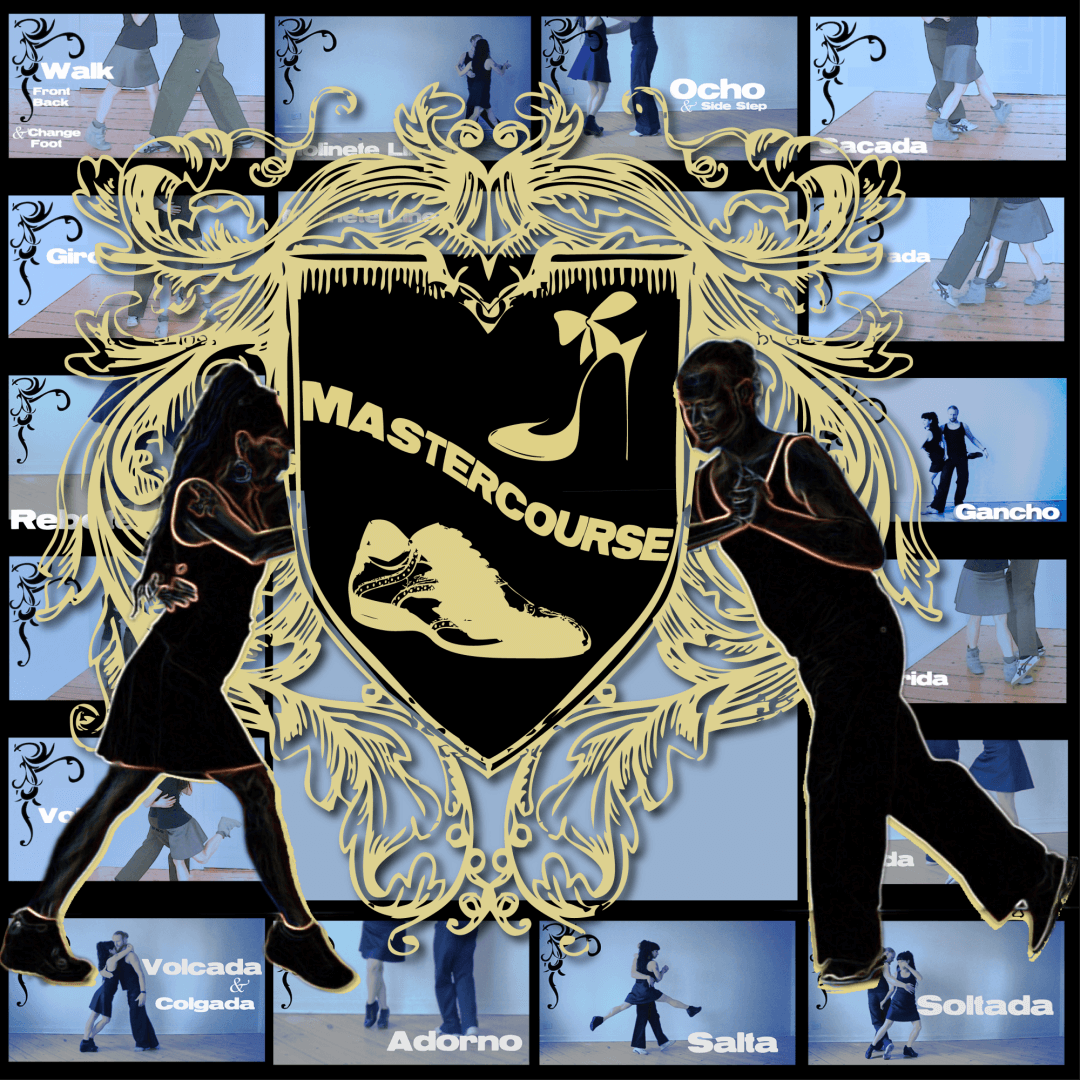2.1 A world of expression inside every step 07:16
2.2 Using the peroneals and embrace action to control the Revel’s transfer 11:10
3. Contexts for Paradas 16:30 3.1 sacada-parada 17:003.2 sacada-sandwichito 18:55
3.3 sacada-gancho 20:50
3.4 pivot parada 24:15
3.5 voleo parada 26:52
12 Parada: Solo Practice
You can dance on any surface today, in any shoes, so go outside with your headphones if you want.
But before you go, be sure to review the technique and take some notes!
Ex1 Choose some beautiful slow music, and dance by yourself, using steps in every direction, exploring and playing with all the possibilities to decelerate, pivot, reverse, and play with the shape of the transfer of weight.
Ex2 Now train your ability to freeze at at least 5 different parts of the transfer. Check that your peroneal muscles are contracted so you are ready for anything!
Ex3 Using faster music than in the first exercise, try meeting the beat of the music with different moments of parada. This will be tricky at first, so be patient with yourself and enjoy!
12 Parada: Pair Practice
You can dance on any surface today, in any shoes.
Ex1 First, both working alone, choose some beautiful slow music, and dance by yourselves, using steps in every direction, exploring and playing with all the possibilities to decelerate, pivot, reverse, and play with the shape of the transfer of weight.
Ex2 Now working together, do the same exercise, just playing with the expressive possibilities inside the step. Please change roles for this exercise, so whoever is usually the Mark gets a chance to experience how the one who is usually the Revel finds expression.
Ex3 Now be a bit more rigorous, practicing freezing at least 5 different points in the transfer. Be patient with each other and give a lot of feedback until you can do this well.
Ex4 Now dance at first without music using steps, sacada, pivot, and pro voleo (if you already know it) and freezing at places you would not usually stop. Again, be very patient with one another and communicate a lot. Once you can do it well without music, use slow music, and finally faster music. Be sure that you continue to focus on stopping in unfamiliar parts of the transfer. This prepares your skills to do new things from these unfamiliar positions.










